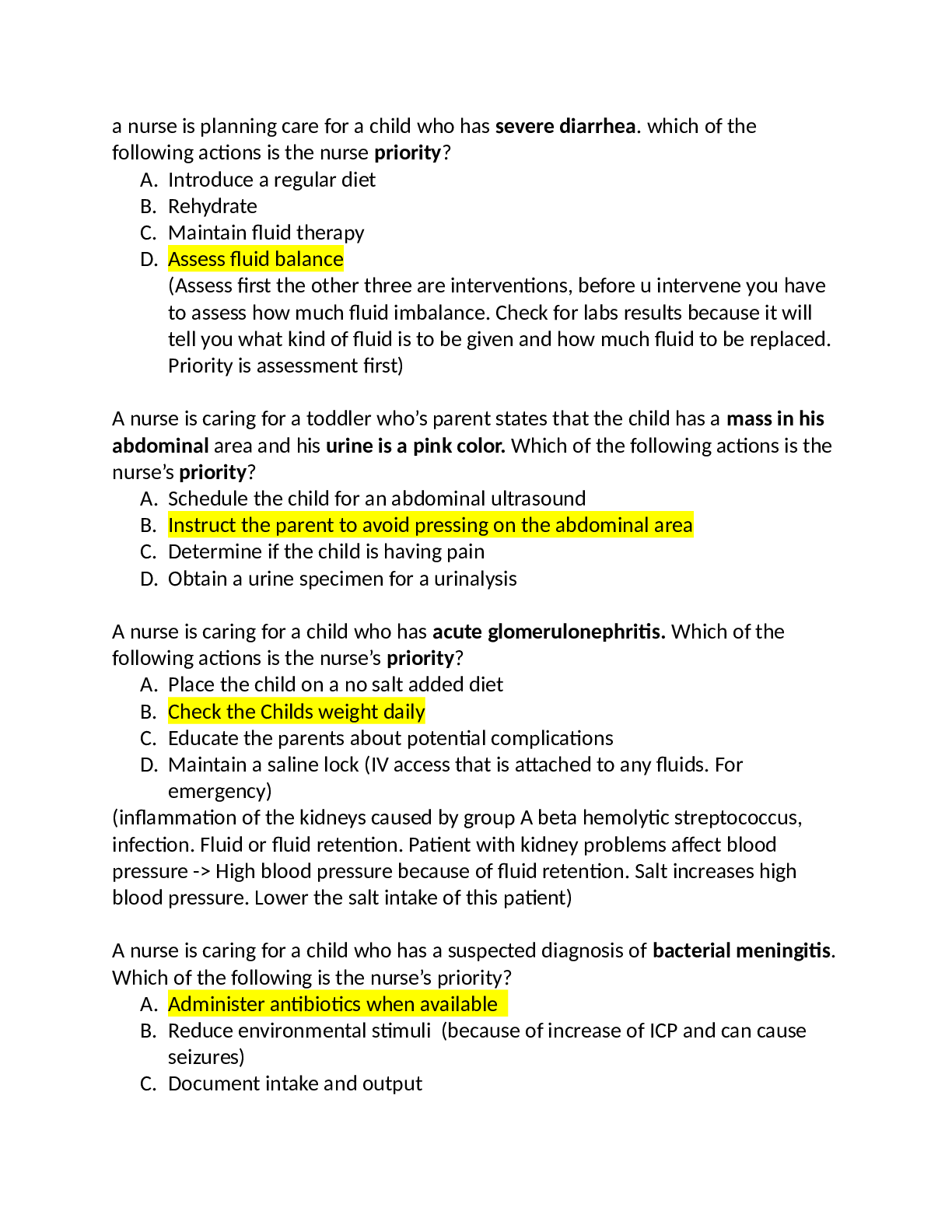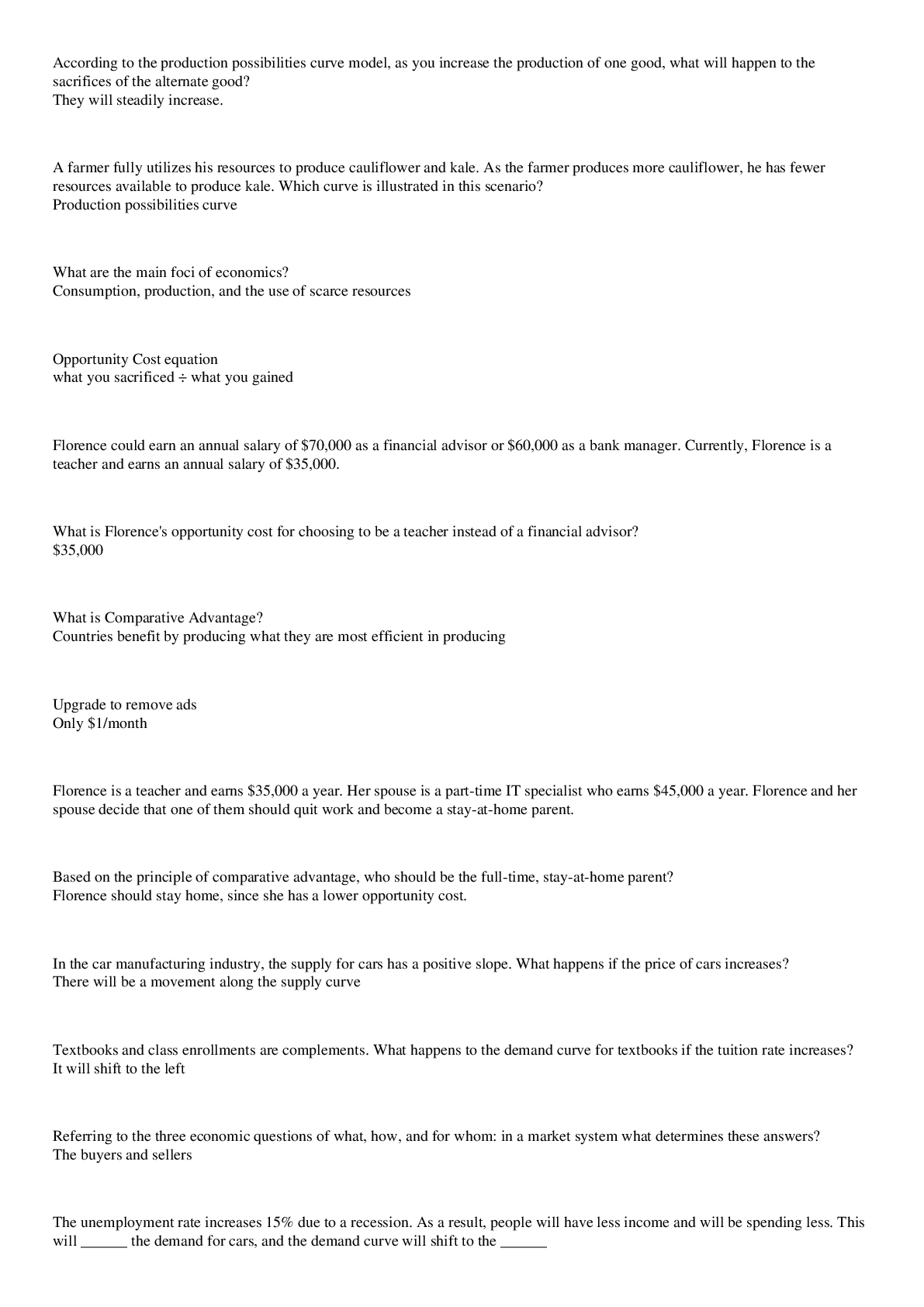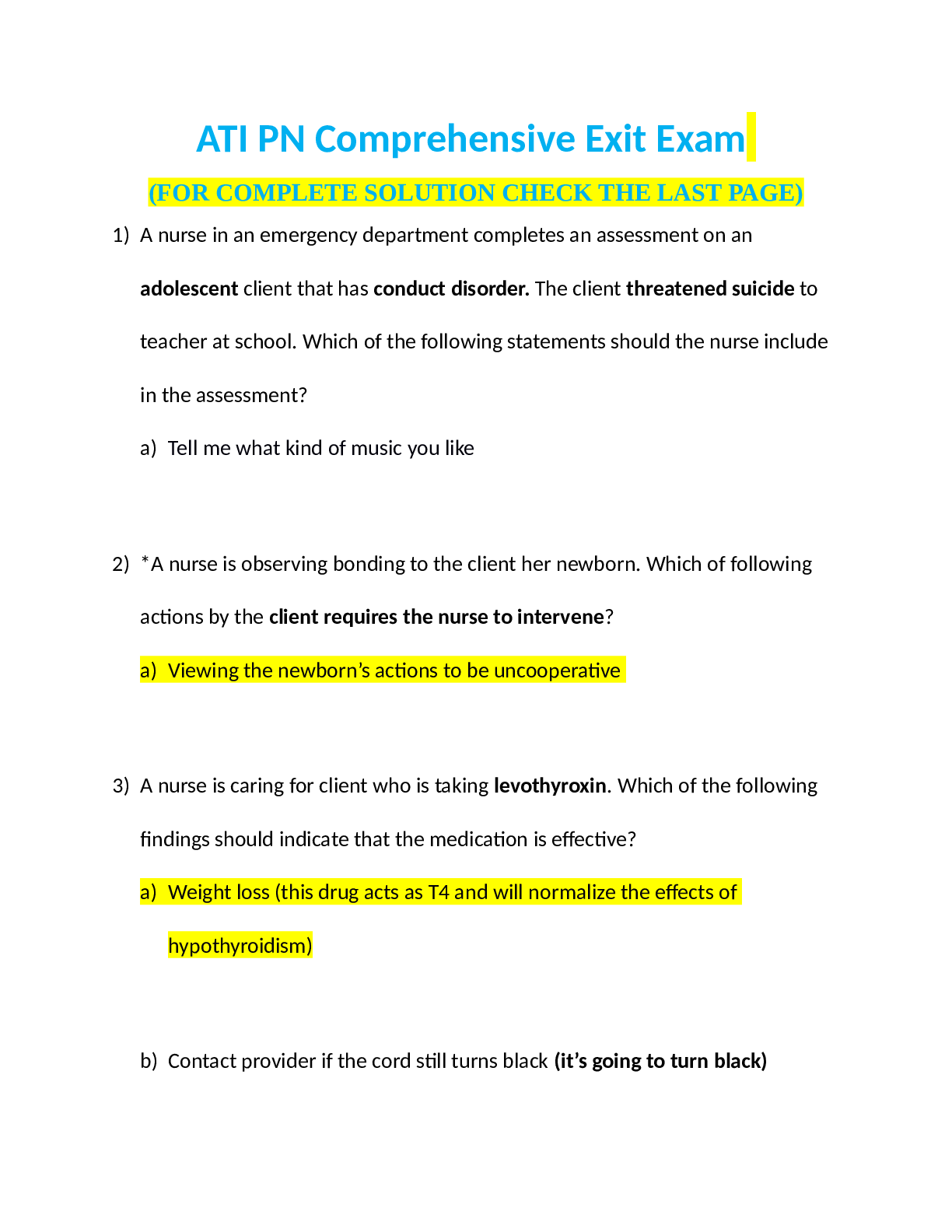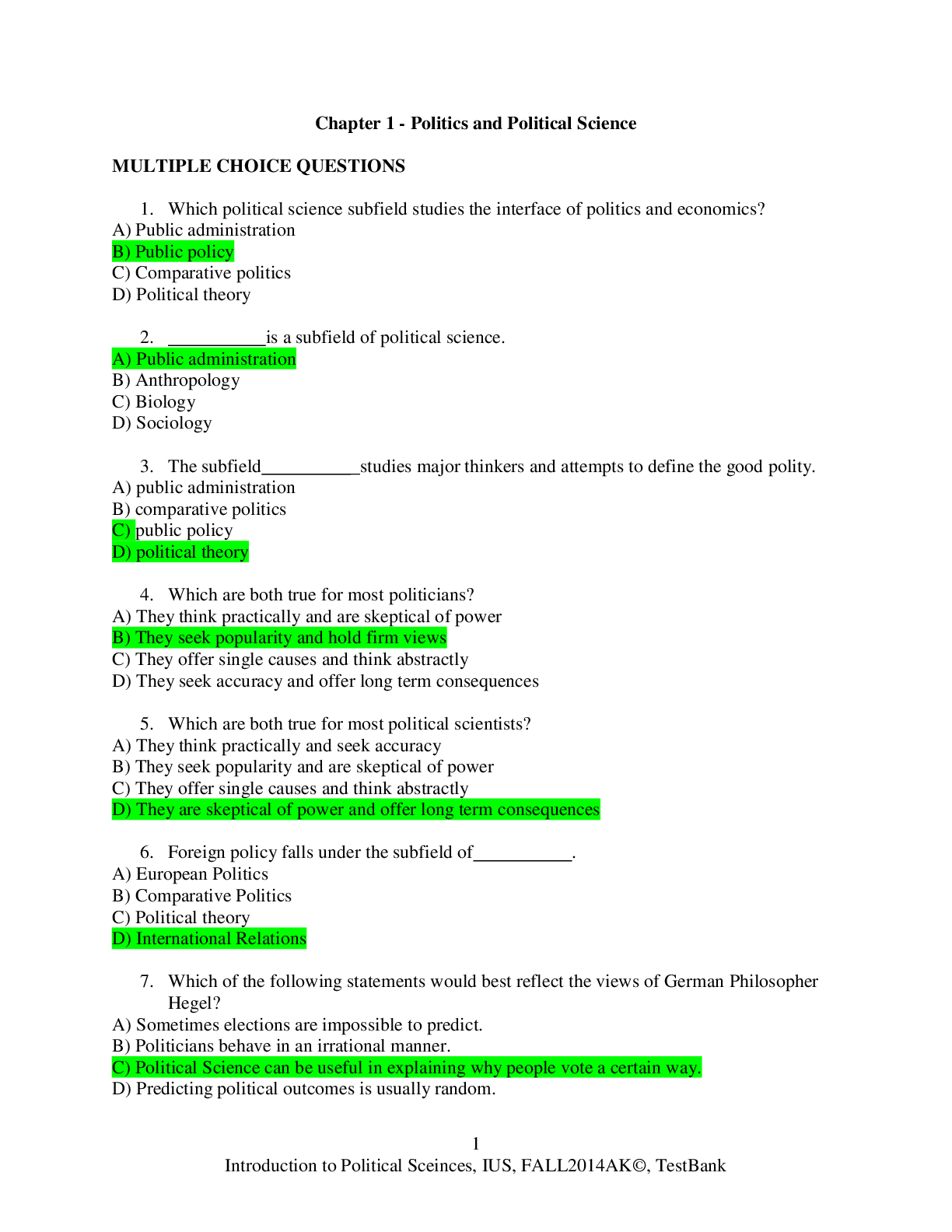Macroeconomics > EXAM > C719 Macroeconomics Pre-Assessment Questions and answers latest 2020 (All)
C719 Macroeconomics Pre-Assessment Questions and answers latest 2020
Document Content and Description Below
C719 Macroeconomics Pre-Assessment Questions 1. According to the production possibilities curve model, as you increase the production of one good, what will happen to the sacrifices of the alterna... te good? a. They will steadily increase. b. They will steadily decrease. c. They will remain the same. d. They will gradually disappear. 2. A farmer fully utilizes his resources to produce cauliflower and kale. As the farmer produces more cauliflower, he has fewer resources available to produce kale. Which curve is illustrated in this scenario? a. Aggregate supply curve b. Aggregate demand curve c. Production possibilities curve d. Business cycle 3. What are the main foci of economics? a. Consumption, production, and use of renewable resources b. Consumption, production, and use of scarce resources c. Consumption, production and use of financial resources d. Consumption, production and use of abundant resources 4. Study the two-sector circular-flow diagram. Classify each statement as either a flow of resources or a flow of dollars. Answer options may be used more than once or not at all. Select your answers from the pull-down list. a. Households provide productive resources to firms. Flow of resources b. Households buy consumer products from firms. Flow of dollars c. Firms sell products to households. Flow of dollars d. Households supply labor to firms. Flow of resources 5. Florence could earn an annual salary of $70,000 as a financial advisor or $60,000 as a bank manager. Currently, Florence is a teacher and earns an annual salary of $35,000. What is Florence's opportunity cost for choosing to be a teacher instead of a financial advisor? a. $70,000 b. $60,000 c. $35,000 d. $25,000 6. Florence is a teacher and earns $35,000 a year. Her spouse is a part-time IT specialist who earns $45,000 a year. Florence and her spouse decide that one of them should quit work and become a stay-at-home parent. Based on the principle of comparative advantage, who should be the full-time, stay-at-home parent? a. Florence should stay home, since she has a lower opportunity cost. b. Her spouse should stay at home, since Florence can potentially earn more. c. Her spouse should stay at home, since Florence only makes $35,000. d. Neither; they should both continue working. 7. Referring to the three economic questions (what, how, and for whom), in a market system, by whom are these questions determined? a. The culture’s tradition b. The buyers and sellers c. The central authority d. The market itself 8. In the car manufacturing industry, the supply for cars has a positive slope. What happens if the price of cars increases? a. The supply curve will shift right. b. The supply curve will shift left. c. The supply curve will change slope. d. There will be a movement along the supply curve. 9. In the car manufacturing industry, the supply for cars has a positive slope. Which two factors can cause the supply curve to shift? a. A change in price of cars b. A change in the cost of labor c. A change in expectations about the future d. A change in consumer tastes 10. Textbooks and class enrollments are complements. What happens to the demand curve for textbooks if the tuition rate increases? a. It will shift to the left. b. It will shift to the right. c. It will stay the same. d. It will first shift to the left, then shift to the right. 11. Below are likely scenarios that affect the demand curve for automobiles. Which scenario is correct? a. The average price of automobiles goes up. This will cause a decrease in quantity demanded. As a result, the demand curve for automobiles will shift to the left. b. The unemployment rate increases to 15% in the state of Michigan due to a recession. As a result, people will have less income and will be spending less. This will decrease the demand for automobiles, and the demand curve for automobiles will shift to the left. c. The Inflation rate is expected to be 4% next year. As a result, the automobiles will become more expensive. This will shift the current demand for automobiles leftward. d. Public transportation becomes less available. Public transportation and private commuting are substitutes. This will cause a leftward shift in the demand for automobiles. 12. Classify each option as either increasing or decreasing if the price of tablets is expected to go down. Answer options may be used more than once or not at all. Select your answers from the pull-down list. a. Equilibrium price for the current month Decrease b. Current demand for tablets Decrease c. Future demand for tablets Increase 13. A drought in Columbia destroyed the rice crops, which caused the supply of rice to decrease. Which scenario will occur as a result of the decrease in supply? a. The supply curve for rice will shift leftward. This will cause an increase in the equilibrium price and a decrease in the equilibrium quantity. b. The demand curve for rice will shift rightward. This will cause an increase in the equilibrium price and a decrease in the equilibrium quantity. c. The supply curve for rice will shift rightward. This will cause a decrease in the equilibrium price and a decrease in the equilibrium quantity. d. The demand curve for rice will shift leftward. This will cause an increase in the equilibrium price and an increase in the equilibrium quantity. 14. The maximum number of skilled and unskilled workers are employed in an economy. What type of employment is this? a. Frictional employment b. Structural unemployment c. Full employment d. Cyclical unemployment 15. In January, Harry was laid off from his job, and he immediately began seeking employment. In May, he stopped looking for a job. It is now July, and he is still receiving unemployment benefits. How would you classify Harry's employment status? a. Underemployed b. Discouraged worker c. Structurally unemployed d. Employed 16. A country has a population of 50,000,000 people and a labor force of 20,000,000 people. The unemployment rate is 9.5%. How many people are unemployed in this country? a. 1,900,000 b. 2,850,000 c. 3,000,000 d. 4,750,000 17. An economist gave a lecture on economic fluctuations. When a student said that inflation hurts everyone, the economist said that this is not necessarily true. Who would most likely benefit from inflation? a. Lenders b. Consumers of retail goods c. Recent retirees d. Borrowers of a loan with fixed interest 18. A business owner is creating a sales forecast for the next year. She chose to monitor the consumer price index for indications of inflation; however, she is worried that there may be drawbacks to this index. What is a limitation faced by the owner in using the consumer price index? a. She frequently adds new products and services to her business to appeal to her constantly changing customer base. b. Based on conversations with her customers, they spend an average amount on other household expenses. c. Many of the items in the fixed basket of goods are reflected in the consumer price index. d. Most of her customers reflect the typical urban, American, family of four people. 19. The Federal Reserve recently announced that it will promote an expansionary policy. It is expected that output will increase. Which event will also occur as a result? a. Prices will fall rapidly, and unemployment will fall. b. Prices will rise rapidly, and unemployment will fall. c. Prices will rise rapidly, and unemployment will rise. d. Prices will fall rapidly, and unemployment will rise. 20. Assume the following: Personal consumption expenditures = $20,000 Gross private domestic investment = $4,000 Government purchases of goods and services = $6,000 Exports = $4,400 Imports = $4,400 what is GDP equal to? a. $38,800 b. $34,400 c. $30,000 d. $21,200 21. While GDP is useful for evaluating a standard of living, it does not account for the side effects of increased production. What is an example of a side effect that is not included in GDP? a. Pollution b. Increase in retail goods available c. The creation of more jobs d. Salaries paid to workers overseas 22. Country Y is a large country with a population of 100,000. It has a low standard of living, as reflected by its real GDP per capita of $50. What is the GDP of Country Y? a. 2,000 b. 20,000 c. 500,000 d. 5,000,000 23. In the aggregate demand curve, what explains the negative relationship between price level and real output? a. Higher prices have a positive effect on planned purchases. b. Higher prices have a negative effect on planned purchases. c. Higher prices have no effect on planned purchases. d. Lower prices have a negative effect on planned purchases. 24. Which event would cause the aggregate demand curve to shift to the right? a. A positive outlook on the housing market. b. A recession c. An increase in interest rates d. Volatility in the stock market 25. According to the law of diminishing productivity, if capital stock is fixed, what will happen to marginal productivity with each additional worker? a. Marginal productivity will increase exponentially. b. Marginal production will cease. c. Marginal productivity will increase at a decreasing rate. d. Marginal production will remain steady. 26. Heather is watching the news and expresses her frustration with the Federal Reserve's inability to control the economic recession over the past five years. Her frustration stems from her belief that the government cannot time its policies to react quickly enough to the stagnating economy. What kind of economist is Heather? a. Business cycle theorist b. Classical c. Keynesian d. Marxist 27. At the end of World War II, people feared that another economic recession would occur. What did Keynesian economists encourage as a means of avoiding another recession? a. Continued high government spending. b. Contractionary fiscal policies c. Contractionary monetary policies d. Increased savings and investment in overseas markets 28. When wages are lower, production yields the same output, but at a lower cost. The lower costs allow the firm to hire more workers and increase output. Sellers will have to reduce prices to sell the extra output. How is this advantageous to a seller? a. Sellers can afford to reduce prices because of lower Interest rates. b. Sellers can afford to reduce prices because inflation is not an issue. c. Sellers can afford to reduce prices because of availability of more workers. d. Sellers can afford to reduce prices because of lower labor costs. 29. According to Keynes, household spending habits are stable. Which factor has the most significant impact on consumer spending, according to Keynes? a. Level of income b. Interest rates c. Inflation levels d. Availability of labor 30. According to Keynes, what is the only way to bring the economy out of a downturn as severe and prolonged as the Great Depression? a. Financial Loans b. Government intervention c. Reductions in government spending d. Savings and investment 31. The nation is entering a recession. The classical economist says the government should do nothing and the market will correct itself eventually. What would the Keynesian economist suggest? a. Increase planned spending by the government b. Decreased planned spending by the government c. Increase planned savings by consumers d. Decrease consumptions by consumers 32. Why do classical economists believe that the government should not become involved with markets during an economic downturn? a. They believe that government leaders are not skilled in economics. b. They believe that it is the responsibility of private firms to solve market issues. c. They believe that manufacturers will appear weak to overseas competitors. d. They believe that there is a time lag that makes the coordination of government policies with markets difficult. 33. If a worker spends 50% of every dollar he earns, what is the worker's expenditure multiplier? a. 1 b. 2 c. 3 d. 4 34. According to Keynes, what should the government do when the economy is booming? a. b. c. The government should continue to increase spending. d. The government should cut spending. 35. The U.S. economy is experiencing a time of slow economic growth and is entering a recession. The economy is operating at point A and is experiencing a recessionary gap. Recessionary Gap 2 What effect would a decrease in taxes have on the economy? a. It would make the LRAS curve shift to the left. b. It would make the SRAS curve shift, but the AD curve would not move. c. It would make the AD curve shift right due to increases in consumption and investments. d. It would make the AD curve shift left. 36. China is experiencing fast economic growth that has caused an increase in the price level. The economy is operating at point C of the graph below and is experiencing an inflationary gap. What should the government focus on to bring the economy back to full employment equilibrium? a. An expansionary fiscal policy to bring SRAS through point B. b. An expansionary fiscal policy to bring AD back through point A. c. A contractionary fiscal policy to bring AD back through point A. d. A contractionary fiscal policy to bring SRAS back through point B. 37. Japan has been experiencing a time of economic stability with its full employment real GDP at U.S. $12 trillion. A market shock has caused the economy to slow down, and there is now a recessionary gap at real GDP U.S. $11.5 trillion. Which two actions should the government take to close this recessionary gap? (Choose 2 answers) a. Increasing government spending on roads. b. Reducing income taxes. c. Increasing corporate taxes. d. Reducing defense spending. 38. Japan has been experiencing a time of economic stability with its full employment real GDP at U.S. $12 trillion. A market shock has caused the economy to slow down, and there is now a recessionary gap at real GDP U.S. $11.5 trillion. At a current level of real GDP U.S. $11.5 trillion, the economy is below the full-employment level. Which fiscal policy action should be implemented to reduce the size of this recessionary gap? a. Decreasing interest rates b. Increasing the money supply c. Increasing government spending d. Increasing taxes 39. Several economists have recognized the limits of fiscal policies when attempting to stabilize or aid economic recovery. During times of economic contraction, fiscal policies are enacted to close the recessionary gap. Which statement explains why the federal tax rebate in 2008 had minimal effects on economic activity? a. A one-time tax rebate does not cause a change in taxpayers' permanent income. b. The tax rebate took too long to propagate. c. The tax rebate did not affect government spending. d. The tax rebate was not big enough. 40. Several economists have recognized the limits of fiscal policies when attempting to stabilize or aid economic recovery. During times of economic contraction, fiscal policies are enacted to close the recessionary gap. Which three lags make fiscal policies less effective? Choose 3 answers a. Stabilization lag b. Destabilization lag c. Recognition lag d. Implementation lag e. Impact lag 41. One of the offsets of fiscal policies is the time that passes from when the government ascertains there is a need to enact a fiscal policy to when the fiscal policy is officially enacted. What is the name of this time lag? a. Impact lag b. Implementation lag c. Recognition lag d. Stabilization lag 42. Due to the lengthy impact lag between the time the contractionary fiscal policy was enacted and the time it was effective, the economy has self-adjusted to full employment. What are the potential implications of a contractionary fiscal policy? a. With an economy at full employment, a Contractionary fiscal policy could bring economic contraction and cause a recessionary gap. b. With an economy at full employment, a contractionary fiscal policy is going to spur economic growth. c. A contractionary fiscal policy is not going to have any effect on a stable economy. d. The government can convert the contractionary fiscal policy to an expansionary fiscal policy in just a few days. 43. The government outlays are caused by transfer payments and approved expenditures to fund Federal programs, whereas the government collects revenue through tax collection. What happens when there is a budget deficit? a. The Government raises taxes to find the money to pay for government projects. b. Government expenditure is less than tax revenue. c. Automatic stabilizers are activated. d. Discretionary fiscal policy leads to spending more than is collected through tax revenues. 44. During a time of economic downturn, unemployment increases. What would be the effect of an increase in unemployment benefit payments? a. It would not have any effect because money has already been set aside to pay these benefits. b. It would increase government outlays, move the budget toward a deficit, and increase national debt. c. It would decrease government outlays and create a surplus. d. It would help the government balance the budget. 45. During the late 90s, the U.S. government ran a budget surplus for several consecutive years by reducing federal spending and increasing some tax rates. What effect do budget surpluses have on the national debt? a. They help reduce the national debt. b. They do not affect the national debt. c. They help raise the national debt d. They eliminate the national debt. 46. What does it mean if the government runs a federal deficit of $230 billion? Choose 2 answers a. The government has a national debt of $230 billion. b. Government spending is $230 billion a year. c. The government is spending $230 billion a year more than its tax revenue. d. The national debt will increase by $230 billion. 47. Budget deficits and surpluses are a flow concept, while the national debt is a stock concept made up by the sum of past budget deficits minus all past budget surpluses. The national debt is the amount of debt the federal government owes its lenders. What are two problems Congress faces when trying to determine the budget deficit? Choose 2 answers a. It can only project a budget deficit, but not determine the actual budget deficit. b. The automatic stabilizers do not allow Congress to accurately determine the budget deficit. c. Congress does not control the money supply. d. Discretionary government spending, in general, does not allow Congress to accurately determine the budget deficit. 48. The national debt is often a topic of debate on the news and among economists, who are concerned about how it will be paid off and by whom. In the first quarter of 2015, the U.S. national debt was almost 103% of its GDP and was held mostly by foreign lenders. How do agencies compare the national debts of different countries? a. By comparing the budget to GDP ratio. b. By comparing the trade deficit to GDP ratio. c. By comparing the debt to GDP ratio. d. By comparing the defense spending GCP 49. The national debt is often a topic of debate on the news and among economists, who are concerned about how it will be paid off and by whom. In the first quarter of 2015, the U.S. national debt was almost 103% of its GDP and was held mostly by foreign lenders. Which two things will happen if the government has to borrow funds to finance the increases in government spending? Choose 2 answers a. Interest rates will increase, causing a decrease of private investment. b. Interest rates will decrease, causing an increase of private investment. c. The growth of the nation’s capital stock will be reduced. d. The government will run a budget deficit. 50. The standard currency used in the United States is the dollar bill. Among other functions, dollars are universally accepted as a form of payment for goods and services. If you say, "My computer costs $500," which function of money are you referring to? a. A medium of deferred payment b. Unit of account c. Medium of exchange d. Store of value 51. Money can have several forms, including dollar bills, coins, or other commodities that are accepted as form of payment in exchange of goods and services. What did World War II soldiers use as money while they were held in prisoners' camps in Germany? a. U.S. Dollars b. Shells c. Gold d. Cigarettes 52. Bernice deposits $15,000 into her checking account at Bank of America, and the required reserve ratio is 10%. How much do the bank's excess reserves increase as a result of Bernice's deposit? a. $0 b. $1,500 c. $13,500 d. $15,000 53. What does a bank's balance sheet show? a. Assets and liabilities b. Earnings and expenses c. Losses and profits d. Revenues and costs 54. The Federal Reserve Bank can engage in expansionary or contractionary monetary policies to pursue economic stability. What should the Federal Reserve do to contract the money supply? a. Buy U.S. government bonds. b. Sell U.S. government bonds. c. Cut taxes d. Decrease the reserve ratio 55. The Federal Reserve engages in policy actions that change the amount of the money supply when it wants to change interest rates. What are the results of a contractionary monetary policy? a. A decrease in the money supply and an increase in interest rates. b. An increase in the money supply and a decrease in interest rates. c. An increase in the money supply and an increase in interest rates. d. A decrease in the money supply and a decrease in interest rates. 56. The Federal Reserve engages in policy actions that change the amount of the money supply when it wants to change interest rates. What are two reasons why banks prefer to get loans from other banks, rather than from the Federal Reserve Bank? Choose 2 answers a. Usually the Federal Fund Rate is lower than the discount rate. b. The Federal Fund Rate is higher than the discounts rate. c. The Federal Reserve is considered the "lender of last resorts." d. The Federal Reserve is the largest lender bank available. 57. When faced with an output gap, whether recessionary or inflationary, the Federal Reserve can engage in monetary policy actions, manipulate interest rates and money supply, and bring the economy back to full employment. What is the direct effect of an increase of the money supply when the economy faces a recessionary gap? a. It makes interest rates rise because people increase their saving. b. It increases aggregate demand because people try to spend their excess money balances, closing the recessionary gap. c. It increases interest rates because people anticipate inflation in the future. d. It decreases aggregate demand because people anticipate economic problems in the future, widening the recessionary gap. 58. When faced with an output gap, whether recessionary or inflationary, the Federal Reserve can engage in monetary policy actions, manipulate interest rates and money supply, and bring the economy back to full employment. What is the short-run effect of a decrease in the supply of money? 59. It causes a decrease in both real Gross Domestic Product (GDP) and the price level. 60. At times, the economy is growing too rapidly (beyond its full employment level), and the Federal Reserve intervenes with monetary policies to close the inflationary gap and restore economic stability. In the real world, how would a contractionary monetary policy be used? 61. To combat high inflation 62. When tax rates decrease, society's disposable income increases. What will happen when this disposable income is deposited in banks? 63. The equilibrium interest rate will decrease. 64. What will happen to the equilibrium interest rate if money stock increases due to an increase in capital inflows? 65. It will decrease. 66. If there is an output gap, which two actions will cause the AD curve to shift right? Choose 2 answers 67. The Federal Reserve buys bonds from the public. The Federal Reserve increases the money supply through FOMC. 68. There is an output gap, and the Federal Reserve buys bonds from the public leading to the money supply increasing and the interest rate decreasing. What will take place next? 69. Spending will increase, and the AD will shift right. 70. What is one of the challenges in implementing monetary policy according to the Keynesian school of thought? 71. Borrowers may not respond to lower interest rates. 72. Monetary policy can have lags like fiscal policy. Which type of lag is referred to as "outside lag" in monetary policy? 73. Impact 74. Which two factors explain why the aggregate supply curve slopes upward in the short run? Choose 2 answer 75. Immobile resources Long-term contractual agreements 76. Consider the AD-AS model. What is likely to happen if there is an increase in oil prices? 77. The short-run AS curve will be upward sloping and will shift left. 78. Consider the AD-AS model. What is likely to happen if there is an increase in oil prices? 79. The short-run AS curve will shift left; the long-run AS will not shift. 80. Consider the AD-AS model. What is likely to happen if production costs are reduced due to deregulation? 81. The short-run AS will shift right, and output will increase. 82. Consider the AD-AS model. What is likely to happen if the government temporarily cuts taxes? 83. The short-run AS curve will shift right, and the long-run AS curve will stay the same. 84. Consider the AD-AS model. What is likely to happen if the government temporarily increases taxes? 85. The short-run AS curve will shift left, and the long-run AS curve will stay the same. 86. Considered from the perspective of long run aggregate supply, what is likely to happen if a government lowers the marginal tax rate? 87. The short-run AS curve will shift right. 88. What is likely to happen if a government decides to apply lower levels of environmental regulation? 89. The short-run AS curve will shift right, and output will go up. 90. What is likely to happen if a government decides to apply lower levels of environmental regulation? 91. Cost of production will go down, and output will go up. 92. The U.S. government plans to impose a quota on the amount of oil imported from the Organization of the Petroleum Exporting Countries (OPEC). There are arguments from the public about whether this policy should be applied or not. Which argument supports the imposing quota? 93. This policy will protect oil production industry in the United States. 94. The U.S. government plans to impose a quota on the amount of oil imported from OPEC. There are arguments among the public about whether this policy should be applied or not. Who will be negatively affected by this policy? 95. The oil consumers in the United States 96. The U.S. government plans to impose a quota on the amount of oil imported from the Organization of the Petroleum Exporting Countries (OPEC). There are arguments from the public about whether this policy should be applied or not. Which is an argument against applying the quota? 97. This policy will hurt the U.S. customers because of higher prices. 98. The U.S. government plans to impose a quota on the amount of coffee imported from Brazil. Which argument supports imposing the quota? 99. The price of coffee in the United States will go up. 100. The U.S. government plans to impose anti-dumping codes for steel imported from Japan. What is likely to happen as a result of this policy? 101. Domestic producers in the United States will benefit. 102. The U.S. government plans to impose either a quota or a tariff on laptops imported from China. There are debates on whether the quota or tariff should be preferred. 103. With a quota, permit holders can buy the good at the low foreign price and resell it at the higher domestic price. 104. The United States is a large importer of Japanese cars. The U.S. government plans to impose trade barriers for cars imported from Japan. If the government proceeds with this plan, how will it impact the U.S. economy? 105. The impact on the U.S. economy will be negative because free trade allows countries to enjoy a variety of goods produced by internationally efficient producers, and prices will be low. 106. What would happen if the U.S. government imposed trader barriers for cars imported from Japan? Choose 2 answers 107. Japanese producers would be hurt. U.S. consumers would be hurt. 108. In response to trade barriers in the United States for Japanese cars, the Japanese government decides to impose trade restrictions on computers imported from the United States. What impact will these restrictions have? 109. The restrictions will benefit Japanese computer producers. 110. In response to trade barriers in the United States for Japanese cars, the Japanese government decides to impose trade restrictions on computers imported from the United States. What would happen if these two trade barrier policies were applied against each other? 111. Japanese car producers and U.S. computer producers will be hurt. Japanese computer producers and U.S. car producers will benefit. 112. What would happen if a U.S. firm constructed a plant in China? Choose 2 answers 113. U.S. producers would be able to pay lower wages abroad. Unemployment would increase in the United States. 114. What is likely to happen if a developing country is able to attract FDI (Foreign Direct Investment)? 115. The economy will improve in the developing country. Unemployment will decrease in the developing country. [Show More]
Last updated: 1 year ago
Preview 1 out of 12 pages
Instant download

Buy this document to get the full access instantly
Instant Download Access after purchase
Add to cartInstant download
Reviews( 0 )
Document information
Connected school, study & course
About the document
Uploaded On
Nov 24, 2020
Number of pages
12
Written in
Additional information
This document has been written for:
Uploaded
Nov 24, 2020
Downloads
0
Views
43


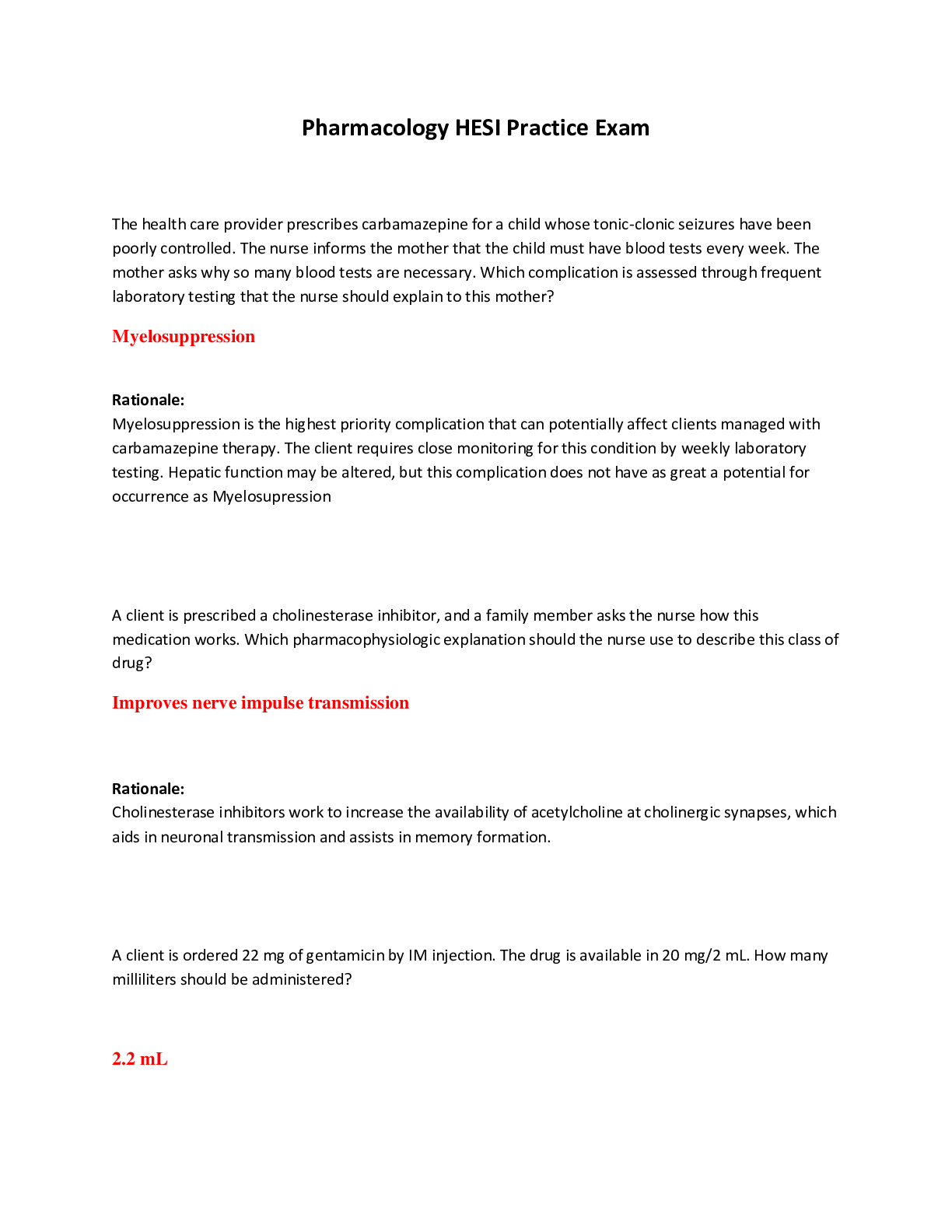
.png)
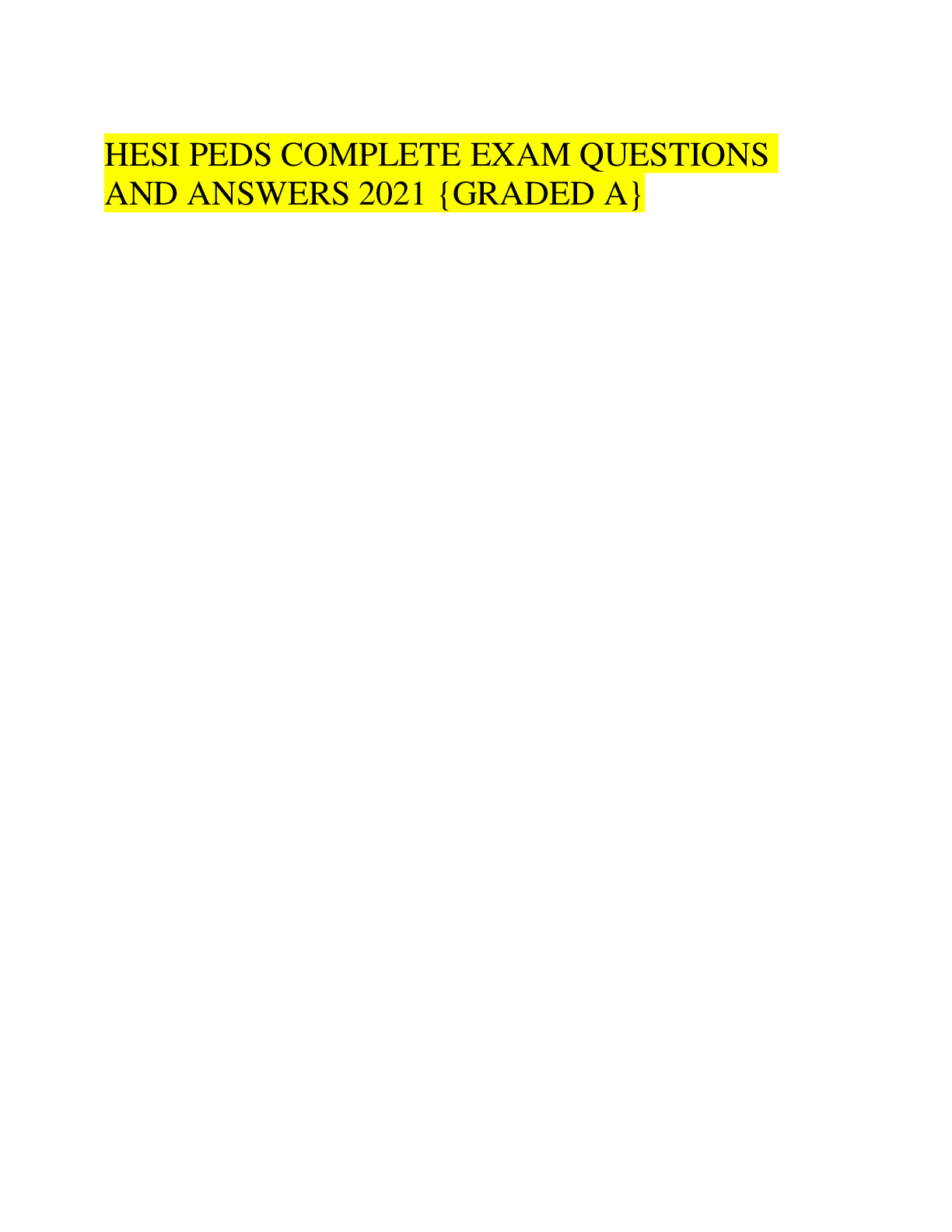
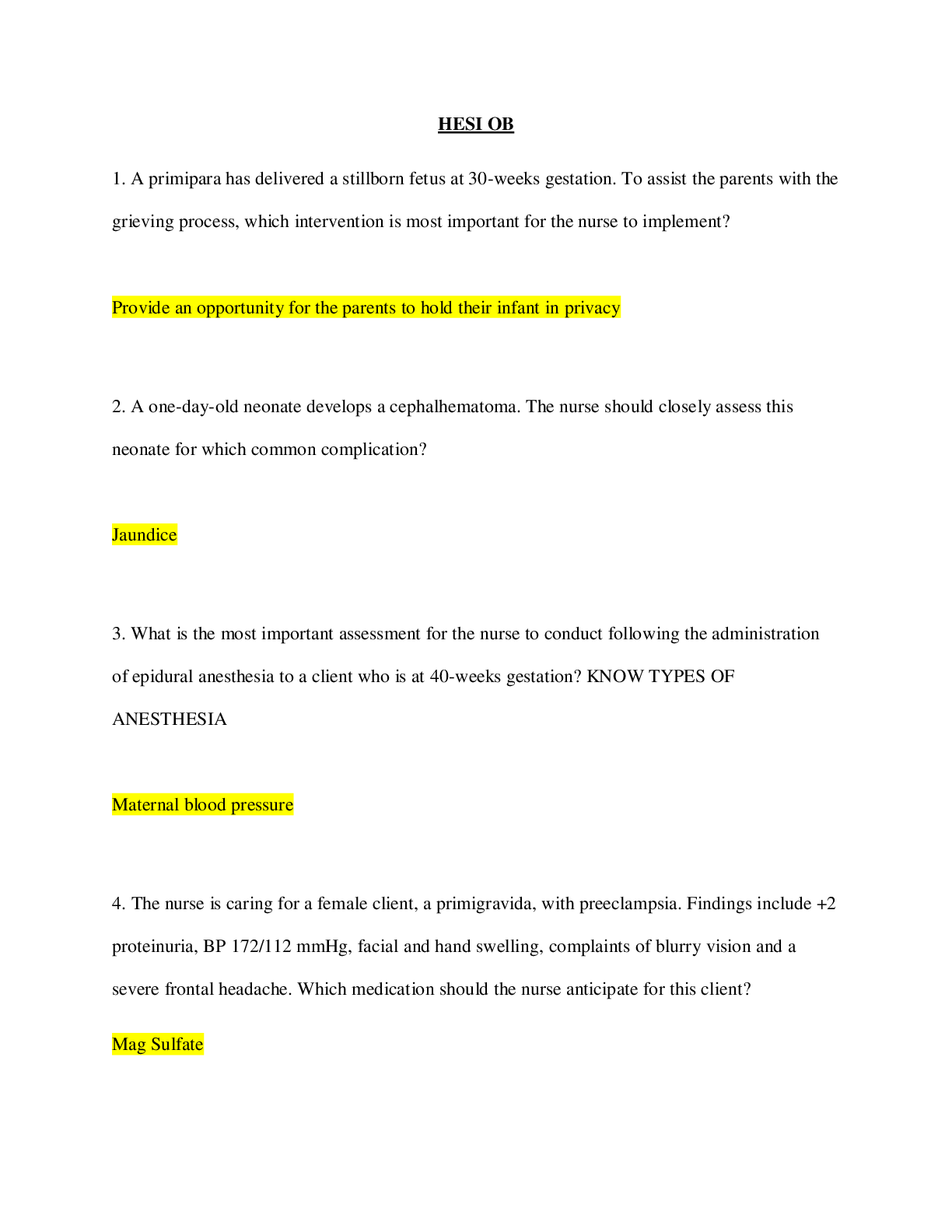
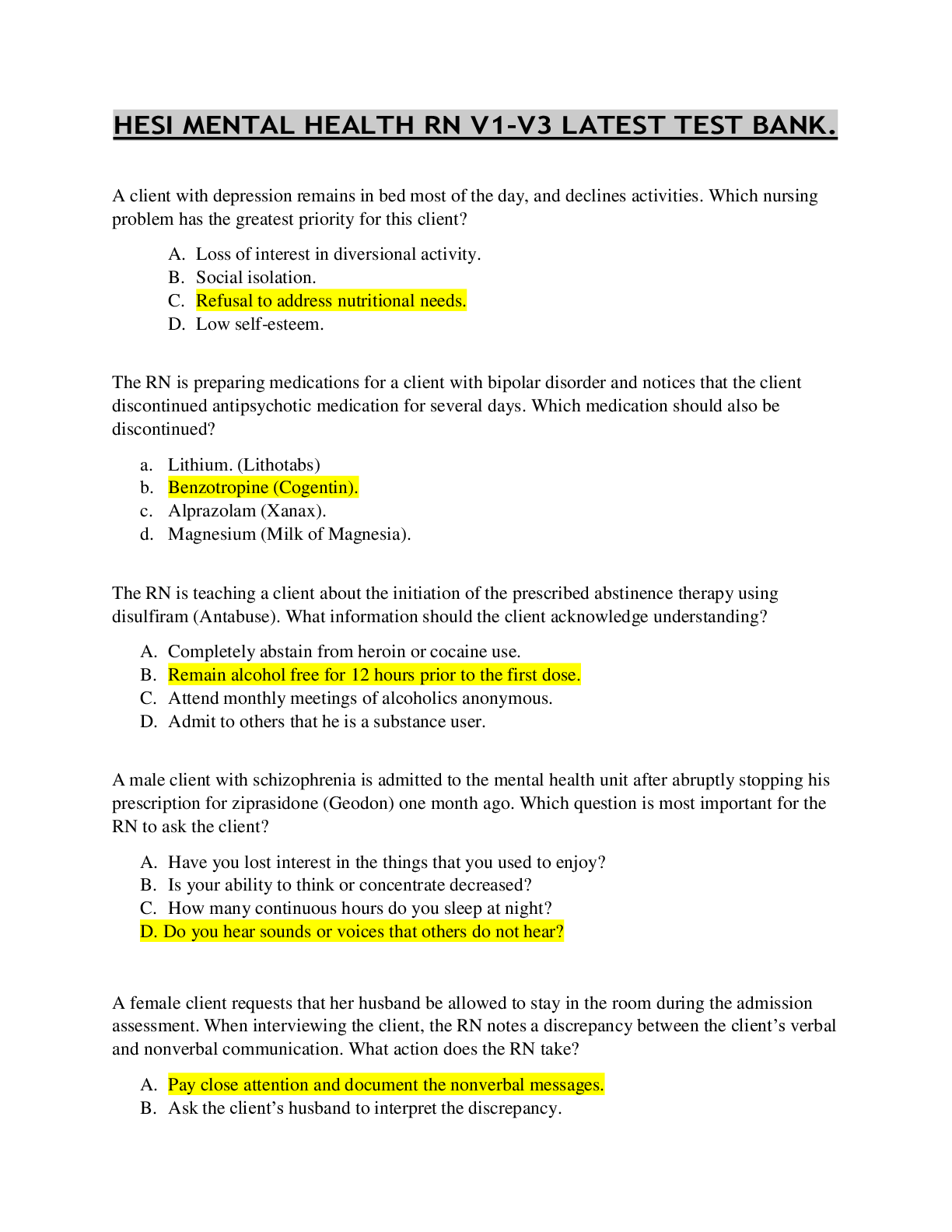


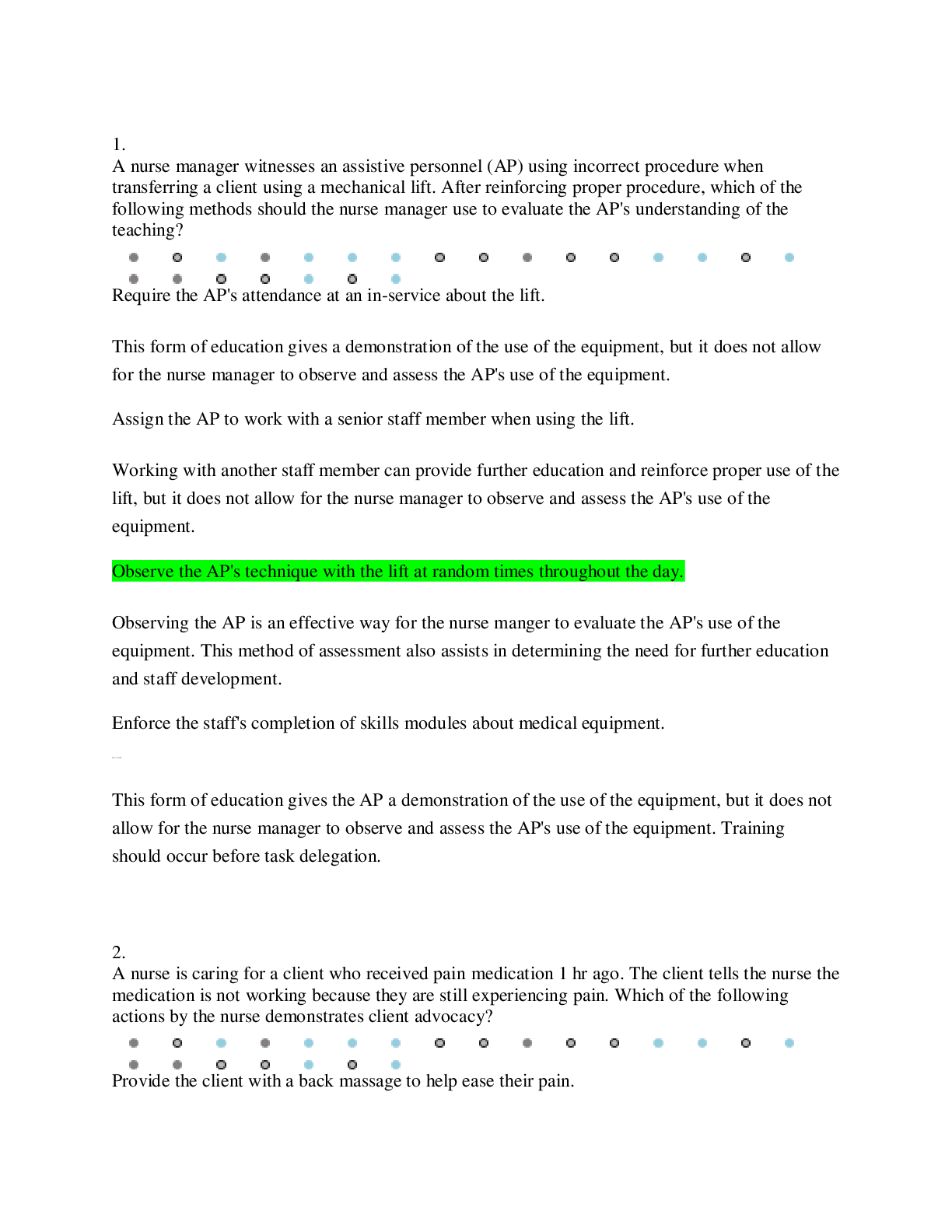

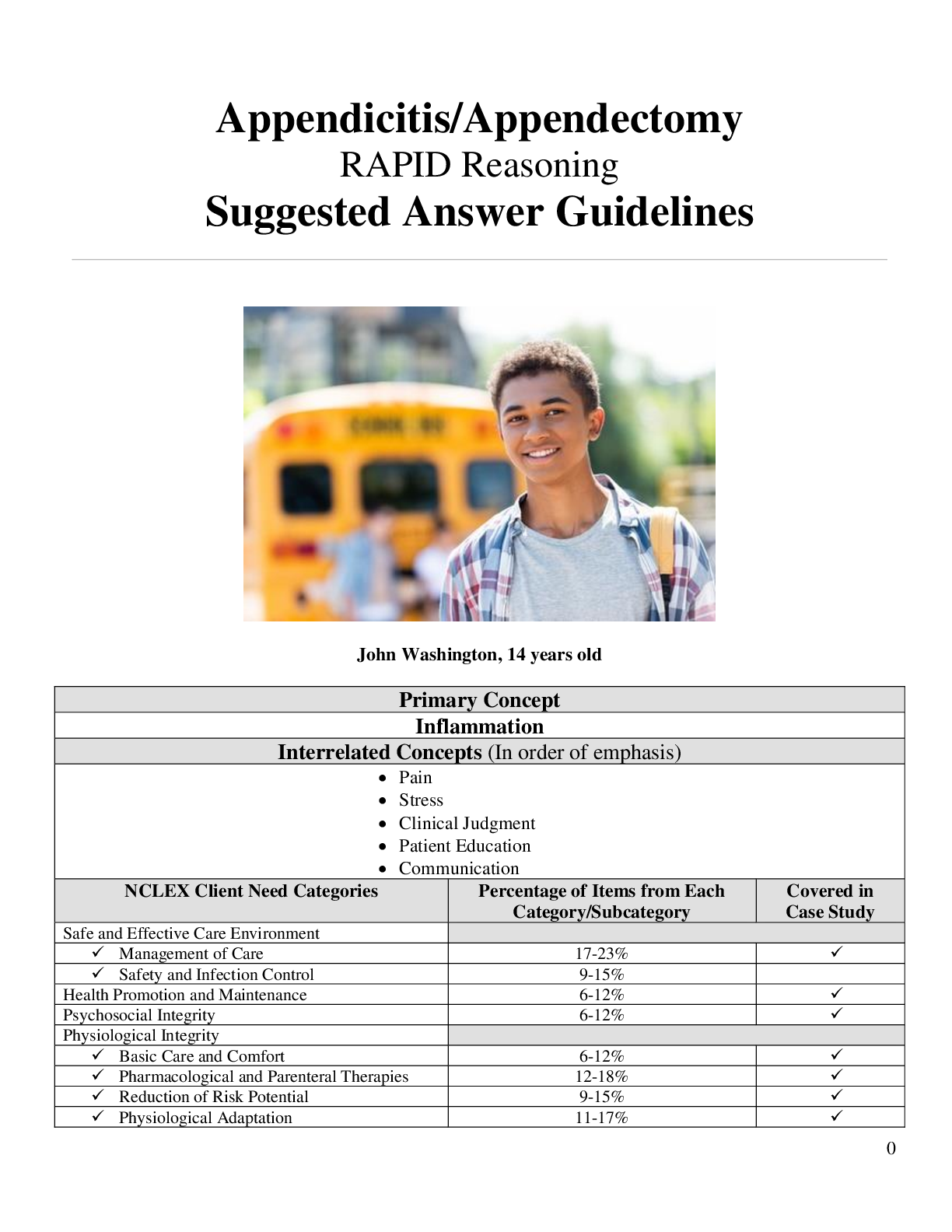
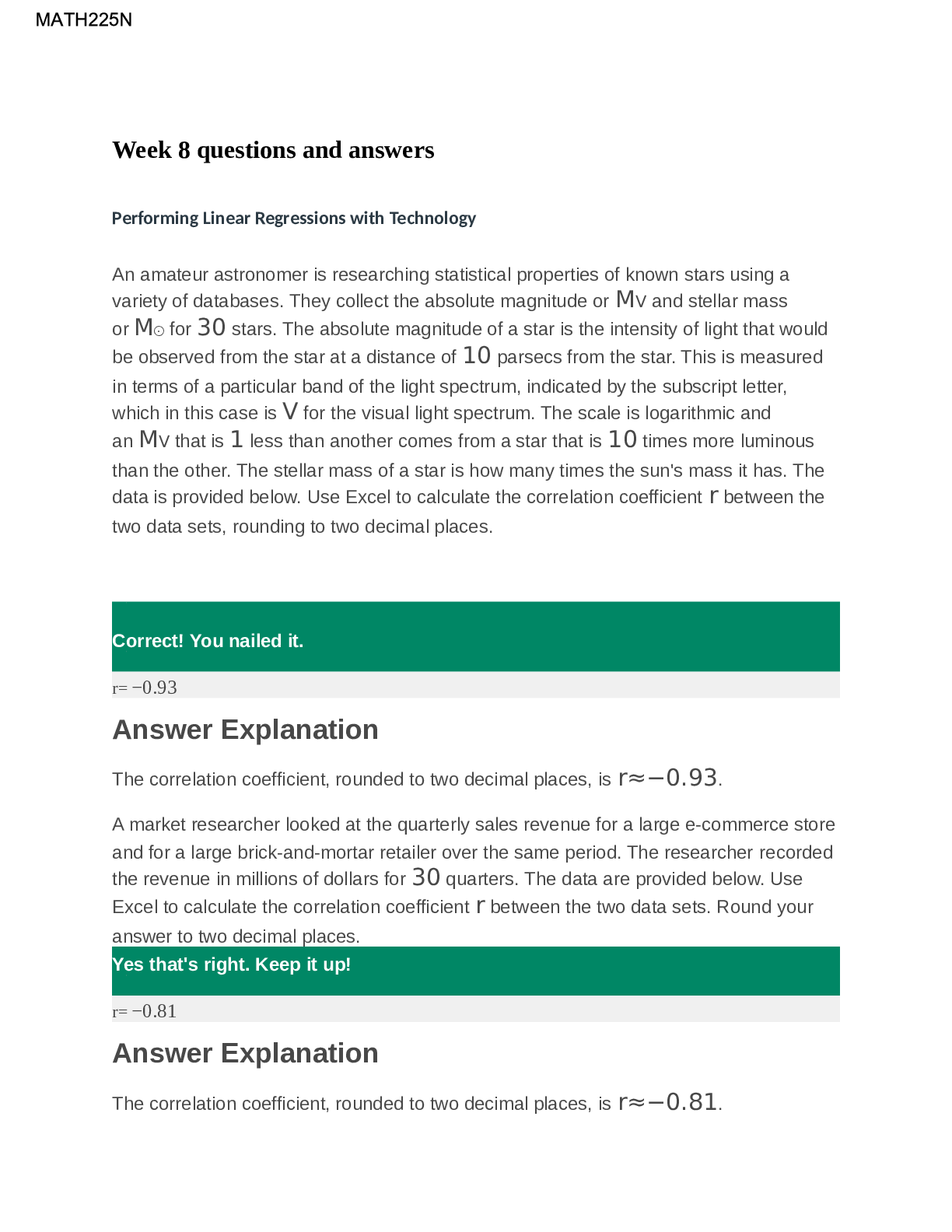
.png)
